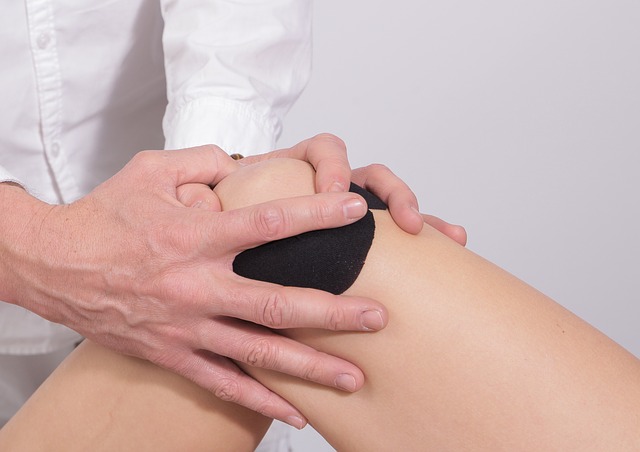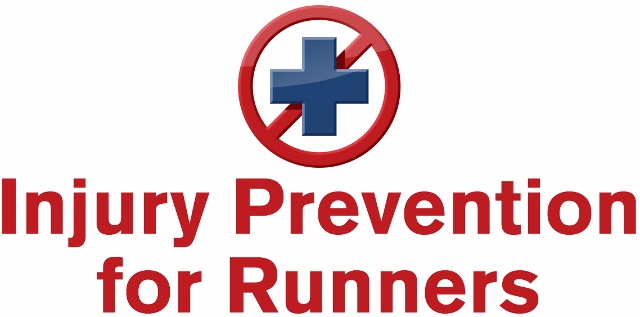Runner’s knee is a frustrating injury and one of the most common sources of knee pain after running. But how do you know if you have runner’s knee in the first place?

Also known by its more formal name patellofemoral pain syndrome (PFPS), runner’s knee is a genuine source of anxiety for both runners and physical therapists because there’s no consensus on what causes PFPS or how to treat it.
So if you do have runner’s knee, the treatment options are muddled and not definitive. Frustrating, isn’t it?
Thankfully, there are still some very good options. It’s always best to focus on prevention first. You’d rather devote a small amount of time to staying healthy than a large amount of time to getting healthy, right?
Patellofemoral Pain Syndrome responds well to conservative treatment and the pain is typically a dull ache, rather than a sharp stabbing feeling.
Your ongoing health and prevention of future cases of PFPS will also depend more on your training than specific preventive exercises. Indeed, how you train is the most critical factor to staying healthy!
The nature of PFPS is that you may experience mild symptoms of the injury for a long time. While your training may not be significantly limited by the injury, it’s often punctuated by the constant annoying ache of runner’s knee.
Let’s discuss how this injury happens and how to know if you have runner’s knee.
What is Runner’s Knee?

Patellofemoral Pain Syndrome is a knee injury common among runners, cyclists, hikers, and those who engage in “jumping sports” like basketball, volleyball, or the jump events in Track & Field.
PFPS is a mysterious injury in that there’s no consensus on why it creates knee pain after running. But there are plenty of theories:
- Some claim it’s because the kneecap (patella) does not track well in its groove in the femur
- Others claim that it’s because the quadriceps is weak and does a poor job of controlling the kneecap during activity
- And some others go on to claim that PFPS occurs because the cartilage of the knee has degenerated. While some research has concluded that there can be some cartilage degeneration accompanying runner’s knee, it’s not necessarily the cause.
Many theories abound yet there is no conclusive answer as to what specifically causes PFPS. The best answer is likely a combination of factors, including weakness in the quadriceps and hips (especially the hips), overuse, and inflexibility. Your individual running form may also predispose you to developing this injury.
If we continue diving into the cause of PFPS, it’s helpful to understand that your knee is a living joint and it’s stressed virtually all the time (even when you’re sitting!). It’s very likely that your PFPS isn’t a significant, traumatic injury but rather your knee “telling you” that it’s tired, potentially inflamed, and overused.
This irritation of the knee is because the joint is experiencing constant abuse – potentially made worse by slight biomechanical inefficiencies.
This perspective on runner’s knee helps explain why most cases respond very well to rest and conservative treatments.
How do I know if I have Runner’s Knee?
Runner’s knee is characterized by knee pain after running (or during) in a very specific location. Like lateral knee pain (on the outside of your knee) being correlated with IT Band Syndrome, there’s a particular location for knee pain that makes it highly probable you have runner’s knee.
If your pain is directly on or along the outside edges of the kneecap, you most likely have PFPS. The pain is typically a dull ache but can occasionally be sharp; it feels like it’s located deep underneath the patella.
Along with the location of the pain, PFPS sufferers typically have more pain when they’re…
- walking up stairs
- running uphill
- squatting
- after prolonged periods of sitting down
- while pushing on the kneecap
It’s important to note that PFPS is different from patellar tendonitis, which is an entirely separate injury characterized by pain in the patellar tendon. This is the thick tendon that connects your patella to your shin. This is a more rare injury, particularly among runners.
Runner’s Knee Myth: “It’s Because of my Q-Angle! Or…”
Many therapists will blame the “usual suspects” for a case of PFPS:
- Leg length discrepancy
- Q-angle
- Severe pronation
But these issues are unlikely why you have runner’s knee. Let’s keep this simple: there is no research that supports these claims.
PFPS is a more mysterious injury than some others, so I can’t criticize clinicians who may blame the “usual suspects.” But the truth is this: no studies have confirmed these issues as contributing to runner’s knee.
These biomechanical issues could certainly contribute to runner’s knee, but nobody knows for certain and it’s irresponsible to make those claims as definitive.
Runner’s Knee Myth: “My Kneecap Doesn’t Track Properly”
This is the most commonly cited cause of runner’s knee. The idea is that the patella “tracks” within the groove in your femur. But when it doesn’t slide evenly in this track, you can end up with PFPS.
This tracking problem is why most treatments focus on…
- strengthening the quadriceps
- stretching the IT Band (but you should know that it’s impossible to stretch this thick piece of connective tissue)
- using knee braces
- taping the knee
But unfortunately, there’s no clear relationship between a tracking problem and your PFPS (it could be a contributing factor, but not the direct cause of the injury).
The patella is more dynamic than we give it credit for: it can move all over the place. If you lie down so your leg is straight and you’re not holding any tension in your knee, you’ll notice the patella seems to hover over the knee joint. Manipulating it in all directions is quite easy.
Like many things in biology, there’s no clear definition of what “normal” tracking is for the patella. Several studies have shown that tilting or displaced kneecaps during activity shouldn’t be construed as “abnormal.” Indeed, abnormal may be normal!
Healthy knees do all kinds of weird things and it’s virtually impossible to tell an injured knee from a healthy knee by looking at the position of the patella.
So if your treatment focuses on correcting the alignment or function of your patella, you should find better treatment.
Is Patellofemoral Pain Syndrome Caused by Degenerated Cartilage?
Unlikely! The cartilage underneath the patella and on the femur doesn’t have any nerves so it’s not what is causing you pain. It’s relatively inert.
What actually hurts is probably the synovial lining, a fancy word for the soft tissue and fluid that surrounds your knee joint. It acts as lubrication between the moving parts of your knee. It’s capable of irritation which is why it’s the specific part of your anatomy that hurts.
Should I Get a Bone Scan or MRI?
In all my research, personal experience, interviews, and coaching experience, I’ve never found mention of MRI or CT Scans being helpful in diagnosing Patellofemoral Pain Syndrome.
However, bone scans have shown to be worthwhile for chronic sufferers who want a more definitive diagnosis. If the patella is truly “distressed” or “tired” like we discussed in the previous section, it will show up on a bone scan. A bone scan works when you’re given an injection with a tiny amount of radioactive material. It shows up on the scan and spreads wherever your blood goes (this indicates metabolic activity, like inflammation or a bone fracture).
Bone scans are expensive and I’d ask your doctor if it’s appropriate if you have chronic PFPS. My research has concluded that this type of scan can confirm a PFPS diagnosis and help isolate the overused tissue.
Can I Train Through Runner’s Knee?
Even though I said before that running on PFPS is a bad idea, it likely won’t make the pain worse (though it certainly won’t make it better).
You won’t destroy your kneecap by running through the dull ache that accompanies PFPS. You probably won’t wear away the cartilage underneath your patella. You’ll be forced to stop by more severe pain before you do anything truly destructive.
But there are risks. You’ll prolong your recovery and you could set yourself up for more severe problems in the future. Carefully weigh these risks with your love of running.
Could I just have arthritis?
Sure, especially if you’re an older runner over the age of 55. Typical arthritis is due to wear and tear and you may be at a higher risk of developing arthritis if you’ve experienced a traumatic injury to the knee in the past.
Visit your doctor and get an x-ray to confirm the diagnosis. But don’t worry, just because you have some arthritis doesn’t necessarily mean you’re experiencing any pain. Degeneration of cartilage in the knee doesn’t always cause pain while running.
Defer to your doctor’s prescribed treatment of arthritis, as it will be different from PFPS.
How to Heal Runner’s Knee
Getting healthy from PFPS is quite possible. In fact, it’s often not as difficult as many think.
But that doesn’t mean it will be easy. Because runner’s knee is not as fully understood as other injuries, the treatment is less conclusive and more oriented toward rest and training modifications.
If you’re patient and willing to try new things, you might be able to start running in just a week or two without any pain.
Check out our Injury Prevention for Runners program, which includes a full treatment protocol for runner’s knee:
- A daily treatment approach so you know exactly what to do to get healthy on a daily basis
- Video demonstrations of effective exercises to treat PFPS
- Tips & tricks on how to heal faster and get back to running
- Training advice on when to stop running, how (and when) to focus on pain management, and more
The program also includes training plans tailored for prevention, an expert interview series, 5 more injury treatment protocols, a collection of runner-specific core and strength routines, and more.
See all the details here and I hope that you recover from your runner’s knee injury as soon as possible!
